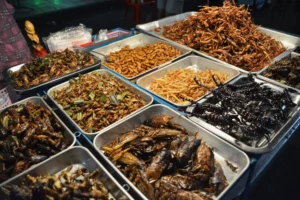Sean Warner and Patrick Pittaluga initially made a burger with black beans and black soldier fly larvae.
This idea came after a 2013 UN report suggesting insects as a sustainable food source.
However, due to the burger’s taste, they shifted focus to insect-based pet and poultry feeds with their company, Grubbly Farms.
This move mirrors a larger trend. Despite environmental advantages, people resist eating insects.
Yet, pet owners have no issue using insect-based foods for their pets. Demand for such pet food might jump by 4,900% to half a million metric tons by 2030, Rabobank says.

Venture capital is also getting interested, with significant investments flowing in. Celebrities like Mark Cuban and Robert Downey Jr. are among the backers.
Startups tread carefully to drum up demand, especially since many humans are not keen on eating insects.
A YouGov survey showed only a quarter of U.S. folks would consider insect ingredients in their meals. This sentiment is similar in Europe.
Conversely, the pet food sector is more open. U.S. stores now sell insect-based feeds, touting health benefits. Major firms like Tyson Foods and Mars are entering the scene.
Thus, companies like Grubbly Farms focus on pet food, pushing the growth of insect protein usage.
Analysts expect aquaculture to eventually lead to the use of insect proteins due to ongoing research and cost reductions.
Regulations, such as the American Feed Control Officials approving insect proteins for dog food, help widen acceptance. But the industry still sees human diets as a long-term goal.
Despite current skepticism, there’s hope insects will be a key part of sustainable diets.

